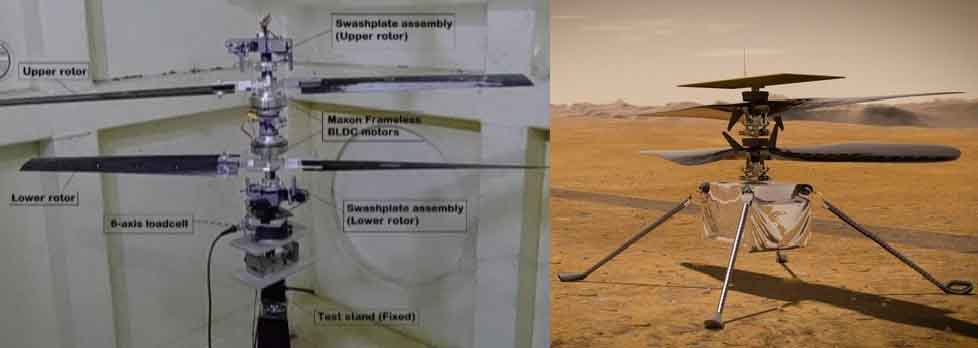ISRO Develops Coaxial Rotor System for Martian Exploration

ISRO's MARBLE project features a novel coaxial rotor system designed to operate in Mars' thin atmosphere, enhancing lift and efficiency for Martian exploration.
The Indian Space Research Organisation (ISRO) is advancing Martian exploration with its ambitious project, the Martian Boundary Layer Explorer (MARBLE). A key innovation in this project is the development of a novel coaxial rotor system designed to function efficiently in the thin and harsh Martian atmosphere.
Challenges of Martian Atmosphere:
Mars presents a unique set of challenges for rotorcraft:
- The atmosphere is approximately 100 times thinner than Earth’s, making lift generation difficult.
- The average surface temperature is around -63°C (210K), a harsh environment for traditional helicopter designs.
Coaxial Rotor System:
To address these challenges, ISRO is developing a coaxial rotor system. This design includes two sets of rotors, one above the other, rotating in opposite directions. The coaxial configuration provides several benefits:
- Increased Lift: The design allows for a smaller rotor diameter while still generating enough lift, which is crucial for the thin Martian air.
- Reduced Rotor Stress: By spreading lift generation across two rotors, the stress on each blade is reduced, lowering the risk of issues related to high Mach number flow.
- Aerodynamic Optimization: The blades are specifically crafted for Martian conditions, maximizing efficiency and thrust.
Significance for Mars Exploration:
The coaxial rotor system for MARBLE represents a significant milestone in ISRO’s Mars exploration efforts. This innovative design is poised to overcome the atmospheric challenges of Mars, potentially enabling future helicopters to gather essential scientific data and explore the Martian surface in greater detail than ever before.
By developing this advanced technology, ISRO is positioning itself at the forefront of Martian exploration, contributing to our understanding of the Red Planet and paving the way for more sophisticated missions in the future.


